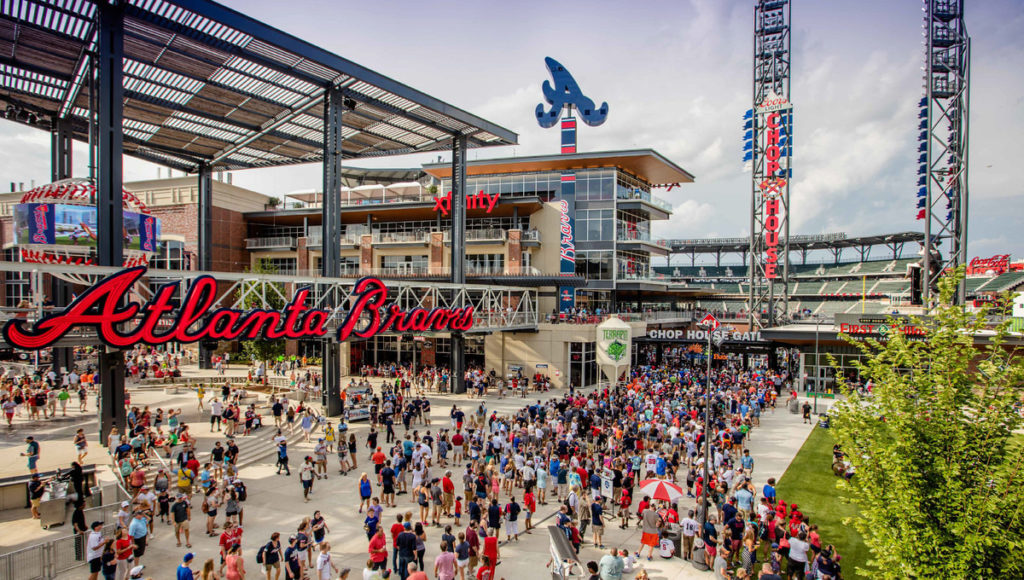What If Every Game Day was Super Bowl Sunday?
By: Jeff Cumpson
For fans, this Super Bowl weekend was an opportunity to eat, drink, and have fun together. For professional sports teams, it was an opportunity to possibly glimpse the future of their business.
To be fair, the Super Bowl is America’s preeminent sporting event, and there was probably more than one trend-setting aspect to the event. But this year’s Super Bowl–and every Super Bowl, really–neatly frames the opportunity teams have if they invest in creating experiences at their home games that go beyond the action.
According to the National Retail Federation, 220.5 million adults planned to watch this year’s game between the 49ers and the Chiefs. Those adults were expected to spend an average of $86.04 per person, or $17.3 billion in total. But, and this will surprise no one, only 44% of those adults said that the game itself was the most important thing to them this weekend.
That means that half of those who planned to watch–nearly 100 million people–took a few hours out of their Sunday and nearly $100 dollars out of their pocket for something they might not have cared that much about.
Now, of course, we know that’s not really true: They cared about the Super Bowl.
But it isn’t the game they care about. It’s the experience of the game.
It’s the parties. It’s the drinks and food. It’s the commercials and the halftime show. It’s the connection with friends, family, and neighbors who are all doing the same thing at the same time. It’s the totality of the event, with the action on the field being a complement.
Don’t believe it? Consider one more stat: Of those who were planning on spending money, only 13% planned to spend money on team apparel. The rest of it was going to food and beverages, decorations, furniture, and TVs.
As they say, it’s only a game.
So, theoretically, teams could significantly increase their audience if they made their home games more like the Super Bowl. But every game can’t be like the Super Bowl.
Or could it?
Many teams are taking steps to bring core elements of experience to each and every home game. Mixed-use districts like The Battery, a NELSON-designed development adjacent to Truist Park, home of the Atlanta Braves, created an opportunity for Braves fans (and anyone else) to gather, eat, shop, and more before and after each game. On a good night, the Battery might resemble the scenes in Las Vegas this past weekend.

The Battery in Atlanta draws 10 million visitors annually, and only three million are there to watch a ballgame.
And this is where it really gets interesting. There doesn’t even have to be a game for this to take place. Like any great neighborhood, the Battery is open daily, year round, meaning those same fans are there even when the Braves aren’t. Consider that the Battery had 10 million visitors last year, and only three million of those were there to see a baseball game.
Not only is investing in experience an interesting opportunity for teams, it might be an imperative. A 2023 report by Deloitte states that while Gen Z and Millennials are avid sports fans, they do not consume sports content the way that Generation X and Boomers do.
Unsurprisingly, these differences are related to technology. Younger fans are less likely to watch a game live than older fans; they’ll catch it on YouTube later. And they are also more likely to be doing something else — checking stats, looking for reactions on social media, or watching another game on a separate device — all while the game they are watching is on.
Put another way, they’d rather watch fans blow each other up on Twitter than high five a stranger after their defense blows up a slow-developing screen pass..
For many, the thrill of sports will never diminish. They want to see the Hail Mary, the walk off, or the buzzer beater, and the artistry of top athletes lives forever in their minds. For others, they love the energy of the game, but it’s the way that energy radiates out from the event that really excites them.
Smart teams will find a way to capture both audiences.

Let's Connect:
Jeff Cumpson,
Jeff Cumpson is Director of Sales Marketing at NELSON Worldwide. With experience in strategy and messaging, he works closely with NELSON's designers to understand their work, where they can deliver value, and how they can communicate that to clients. A former collegiate athlete, he is still inspired by the positive impact sports can have in people’s lives. Reach out to him at Jeff Cumpson.